Enrik Pavdeja started his career in visual effects in 2009 at DNEG. He then worked at ILM before joining the Framestore team in 2019. He has worked on many films such as John Carter, Star Wars: The Force Awakens, Avengers: Endgame, Doctor Strange in the Multiverse of Madness.
How did you and Framestore get involved on this show?
This was a script that we all loved, and the visual effects work required to carry a film of this complexity was a huge undertaking which we couldn’t wait to get going on once Universal and Balt gave us the green light.
How was your collaboration with Director Baltasar Kormákur?
Balt is a great collaborator. Very early on in the show he showed a great interest in learning about the VFX process and how his CG characters would be brought to life. He was very involved in the pre-vis stage of the show, and we worked very closely in designing all our Beast performance ahead of shoot, figuring out all the oners and of course working with stunts and the creature FX department to realise Balt’s vision for our creature work.
What was their approach and expectations about the visual effects?
Balt wanted Beast to feel as real as the technology would allow us. Not only in look and appearing photoreal, but more importantly in performance. He wanted Beast to be another star in the show, who could perform as directed. We took a lot of cues from other shows such as The Revenant – bear attack scene for the intensity, and visceral feeling, and A Quiet Place, for the suspense and shock moments that he wanted to portray throughout the film. Overall the intention was to portray creatures that are never doing anything fantastical or exaggerated. He wanted the lions to appear as unpredictable as lions in the wild, feel grounded and come across as they would in the real world.
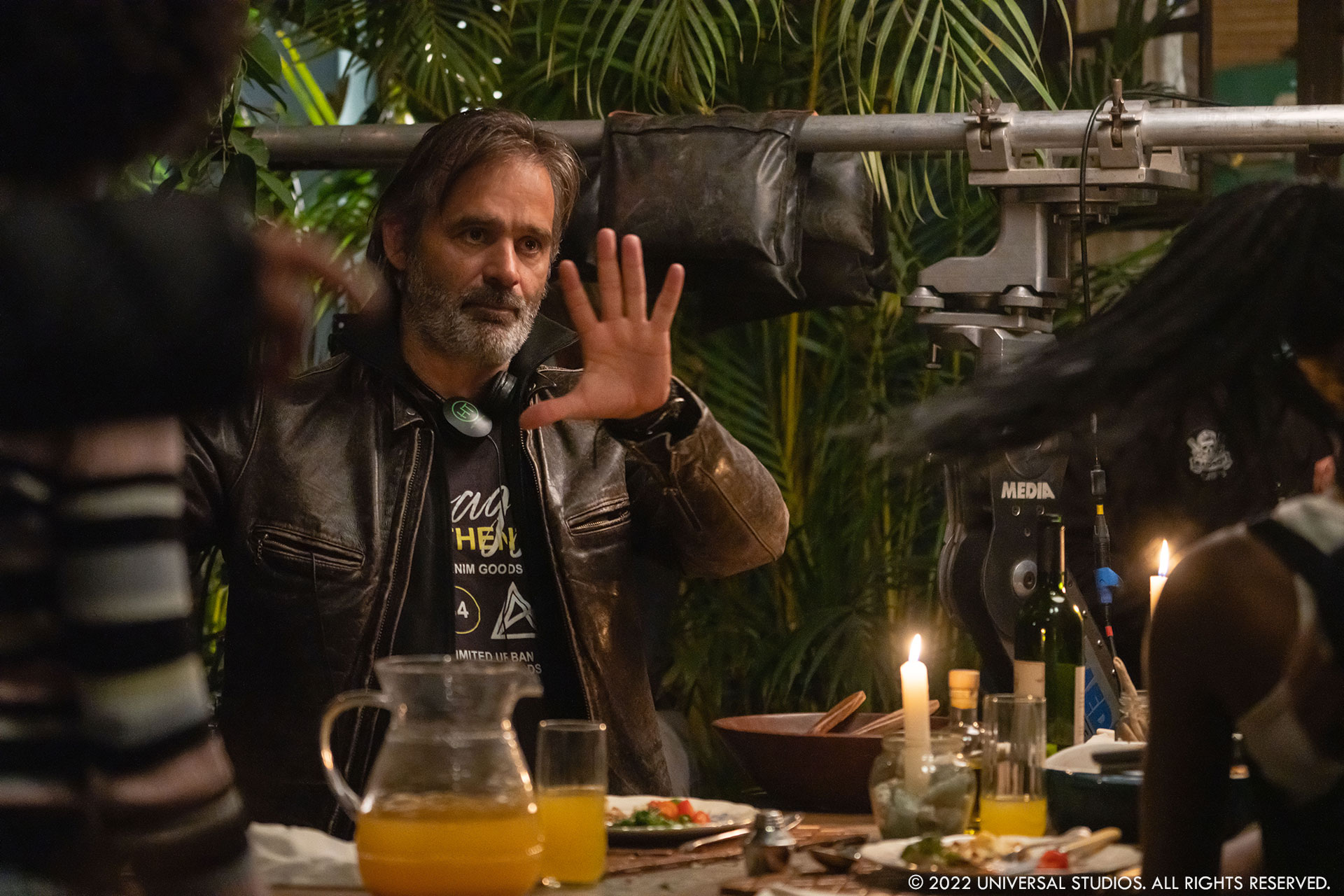
How did you organise the work with your VFX Producer?
Working with Hal Cuzens was a blast. We understood very early on the huge task ahead and started meticulously breaking down the script. We had a lot of long oner shots, full CG shots with lots and lots of interaction and FX, a daunting amount of performance centric animation and of course lots and lots of assets to get going on with. We started the asset work during prep, and this continued throughout the shoot and well into the director’s cut turn over. We made a huge effort to try and get turnover to Framestore as early as possible so we could get going with the mountain of tracking, paint and roto for the long oners. From then on it was all about animation and finding our lion performance.
How did you split the work amongst the Framestore offices?
We did a lot of the tracking, paint and roto in our Mumbai office. All other VFX work was carried out by the London office.
How did you use the Framestore experience in creatures for this show?
Framestore is renowned for being a world leading house in creating incredible creatures for the big screen and when it came to Beast, a lot of that knowledge, experience and technology and methodology developed over the years was paramount to the success of getting the digital lions on Beast to feel believable and grounded in reality.
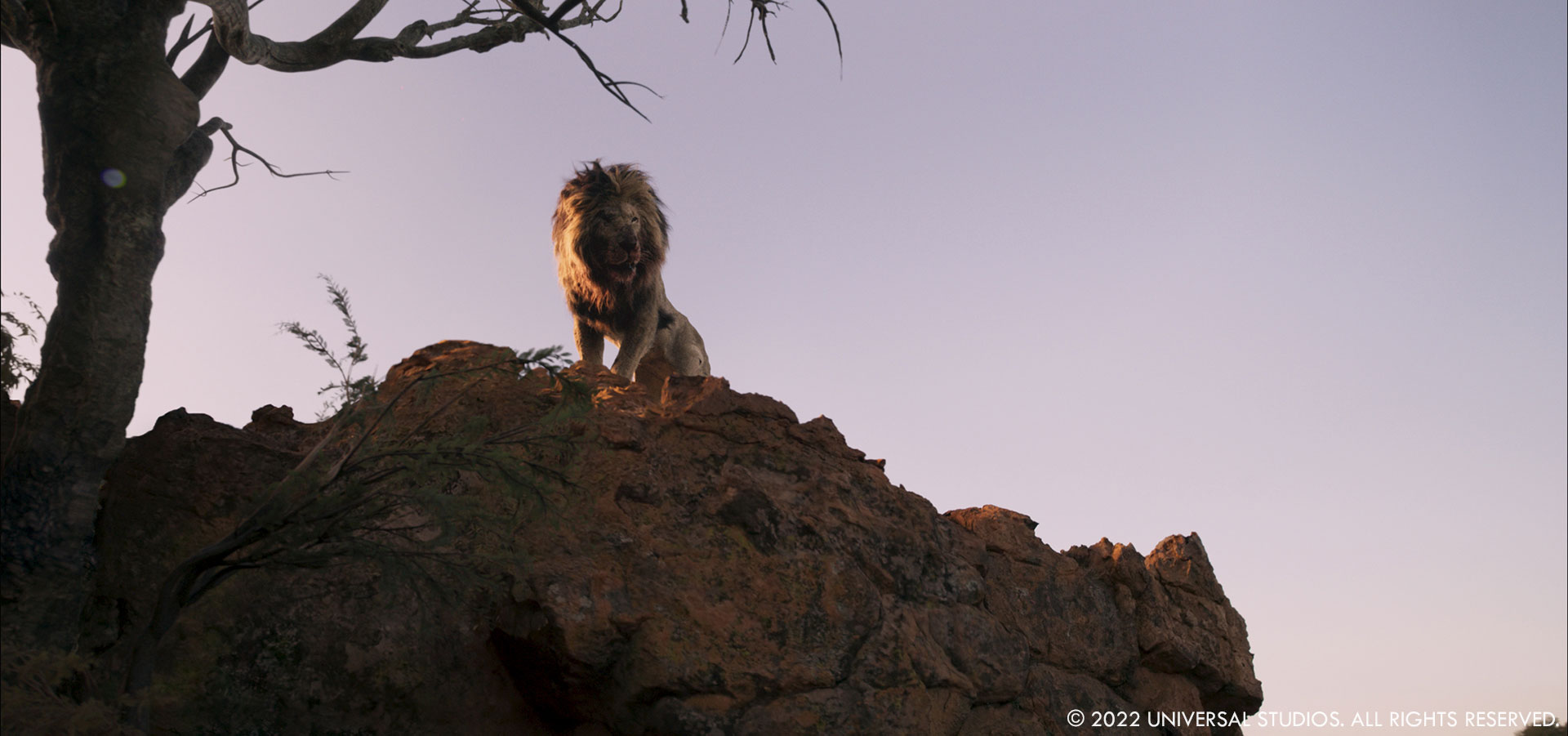
What was your approach to create that terrifying lion?
We first started with concept art from the Framestore Art Department. There was one lion in particular – Scarface – who sadly recently passed away which Balt was a big fan of. He was bigger than your average lion, had a menacing look to him, and a scarred eye. We started there, and progressively refined the look to make him our Beast.
Can you elaborate about its creation and its rigging?
The asset creation was closely looked after by our very experienced CG supervisor Dan Neal. We ran through a few iterations to find the proportions to get Beast to look visibly bigger, but equally believable as a lion. We adjusted facial features to bring him closer to a real lion, but maintain his menacing appearance. We spent a lot of time on the claws, and getting the complex features to come through.
The lookdev team worked tirelessly to get the fur to match our reference. The mane went through a number of iterations to get the light and dark quiff to come through, and we worked closely with rigging and CFX to have natural musculature on a very strong looking but equally agile Beast.
A lot of time was spent in CFX developing a muscle system that could replicate that of a lion. If you study lions carefully you realise that their muscles are incredibly complex. They create very abstract shapes with tendons appearing and disappearing and musculature readable underneath the skin. We had to develop a system where we essentially shot sculpted all the shapes the muscles could possibly do.
These were then rigged so that the animators had control, but were initially fired automatically. We would then run these through simulations to get the right weighting and jiggle and work together with skin sliding. It was a very complex process with rigging, CFX and modelling working very closely together to achieve a realistic representation of the musculature found in lions.
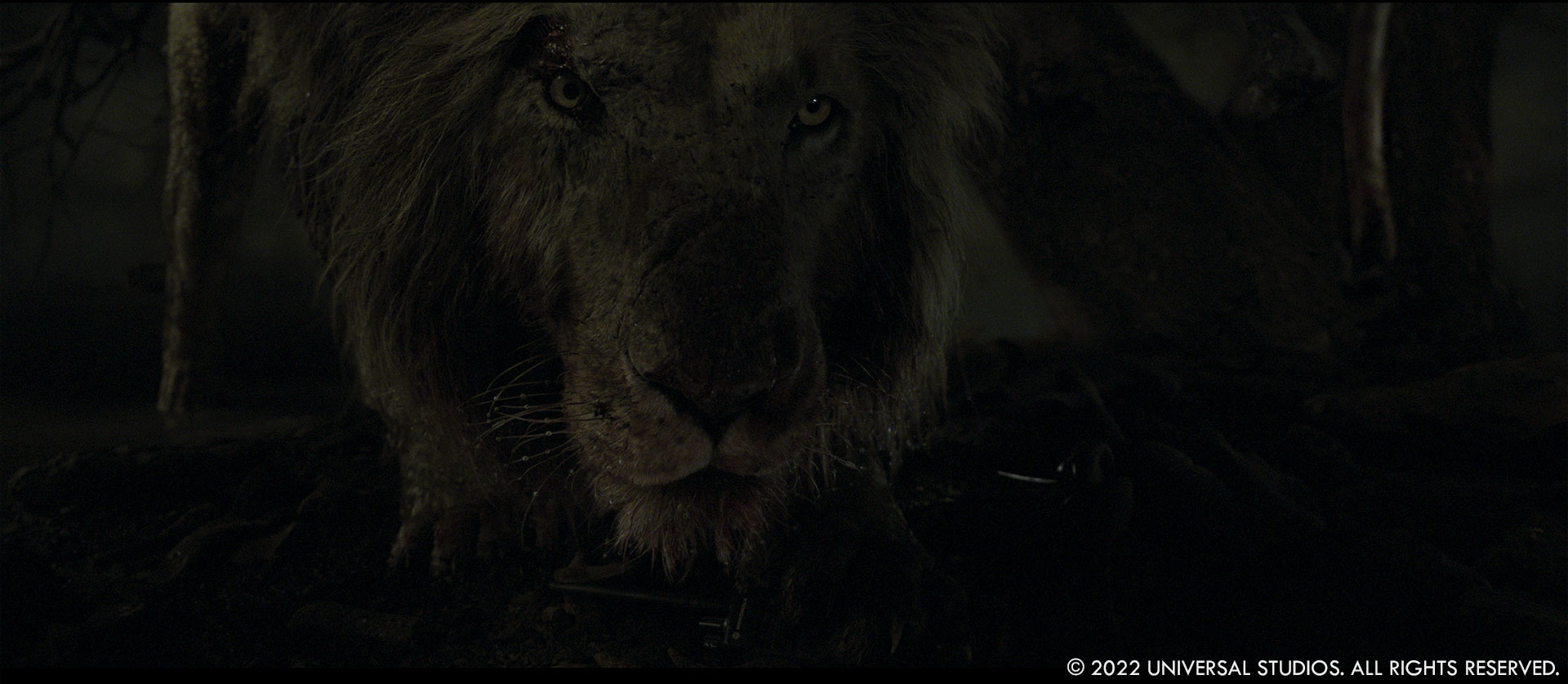
Can you tell us more about the animation work?
The animation was supervised by Alvise Avanti and he’ll be the first one to tell you this was a very animation centric show which brought on new challenges to a typical creature show. Unlike a creature which is cute, talks and performs in a sometimes fantastical way, lions on Beast had to perform in a very realistic manner, sometimes underwhelmingly so.
The animation on this show had to be so perfectly balanced so that our creature felt grounded. If you look at a lion in the wild, they’re very expressionless so it was a challenge to not push that too far to get a performance that was believable and equally engaging.
Alvise and his team were involved pretty early on to figure out the performance for our lions and started out with post-vis where we could roughly block out the animation. From there we started refining the overall performance before moving into complex muscle and facial animation.
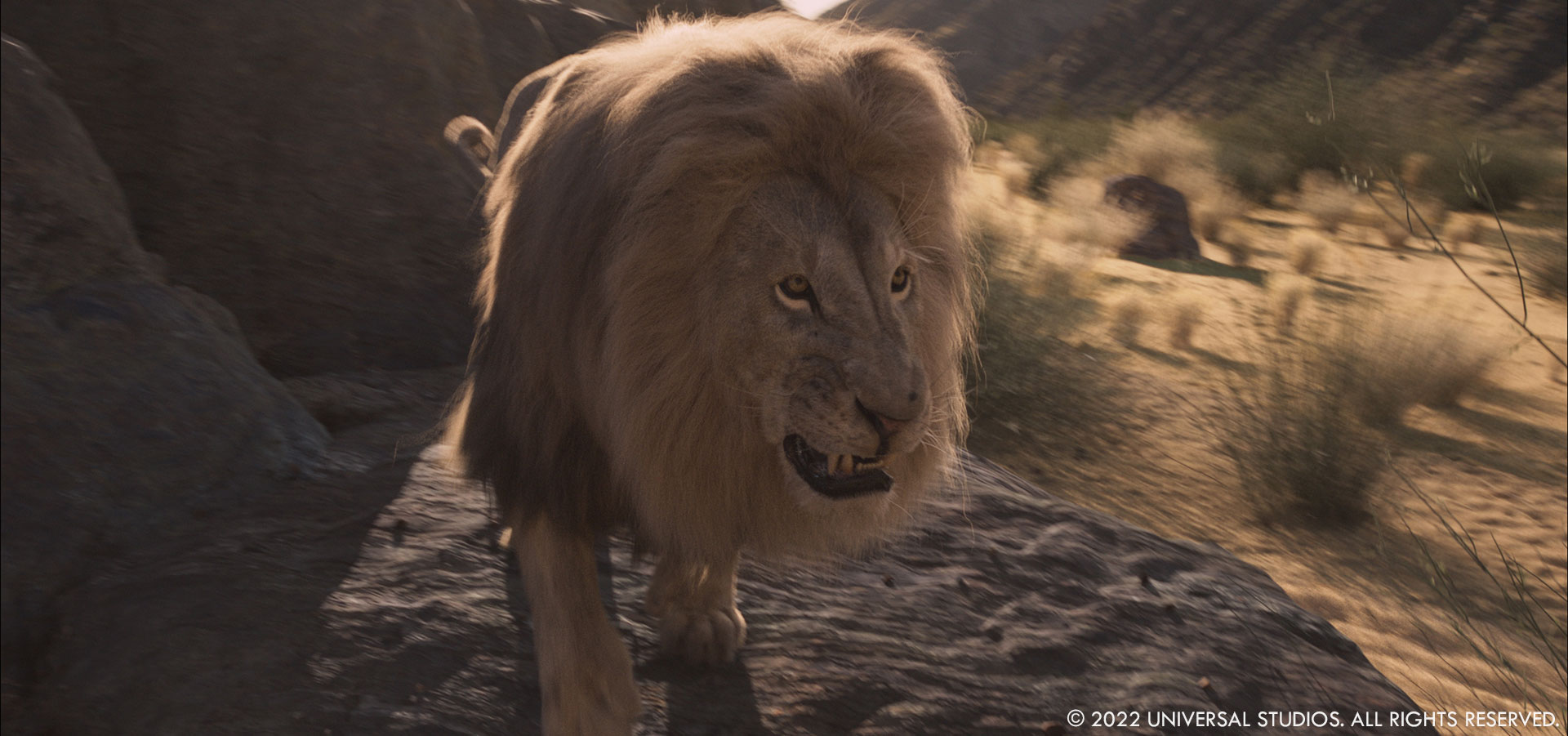
What kind of references and influences did you receive for the animation?
Initially the animation team started collecting tons of animation reference of animals from documentaries, various clips online, footage from animal trainers etc.. We essentially built a huge library of lion action references that we could call up at any point.
While in South Africa we did extensive studies of real lions. Before the shoot we spent two days in an animal sanctuary where we filmed a pride of lions together, and individually. The trainer would do everything from hug and playfight with the lions, to feed them and encourage them to perform various actions such as jumps, runs, walks, growls, roars, paw swipes etc… This was a great reference for our animators to get a close look at how lions move. This was also an invaluable reference for our CFX team. Getting a really close reference of how muscles contract and slide under the skin, how the mane falls or reacts to the wind.
And lastly on location we filmed our real lion ‘Mojo’, which one of the hero lions in the film is based on performing various actions in the correct lighting conditions. So in reality we had a number of references that could be called up at any point to help all our departments.
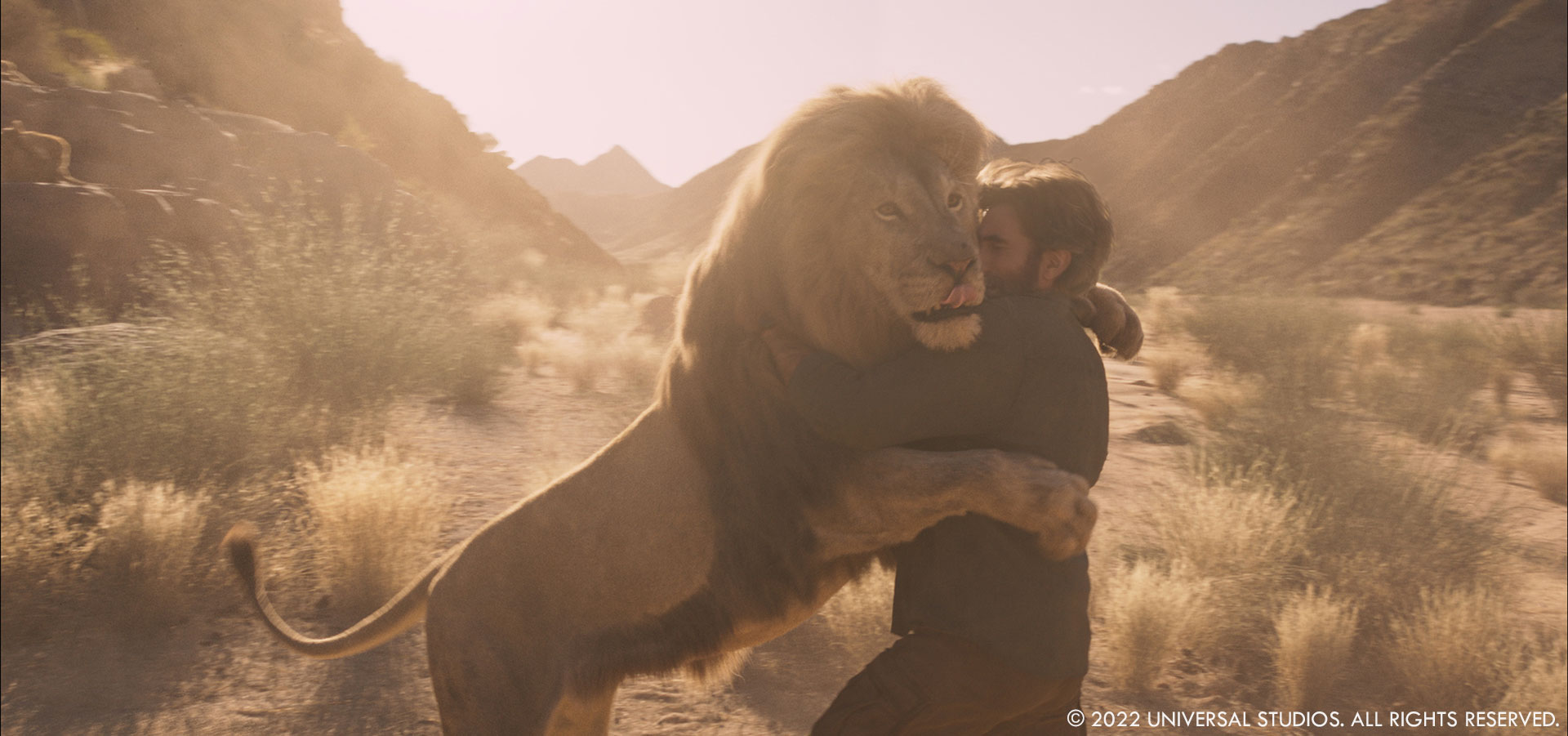
How did you handle the interactions between the lion and the actors?
We had different methodologies that we employed for interaction.
For any quick action beats we had lion paws that were moulded out of silicone which could be worn by a stunt man or placed on a stick to interact with the actors.
For the lion hug we built a rig where two puppeteers could perform as a lion. Essentially a grey lion suit that one of the puppeteers would wear. This had the correct length for the neck and head placement, and meant that the performer’s arms could represent the interaction of the lion paws. Behind him we had a second performer who could drive the neck and head movement.
For Under The Car we had a 3D printed lion head, that was light and easily carried by our stuntman. He could move around holding it at the correct height and this acted as a good guide for eye line but also when Idris would kick him he had something solid to aim for.
For the end fight we built a rig where a stuntman was dressed in a lion costume. His head was attached to the neck of the lion, and the lion head was on top. This allowed flexibility for the stuntman to quickly move but have access to his hands for any heavy interaction. On Idris we built a harness rig that the stuntman could grab with his hands and move around violently to simulate a bite, or a strong paw swipe.
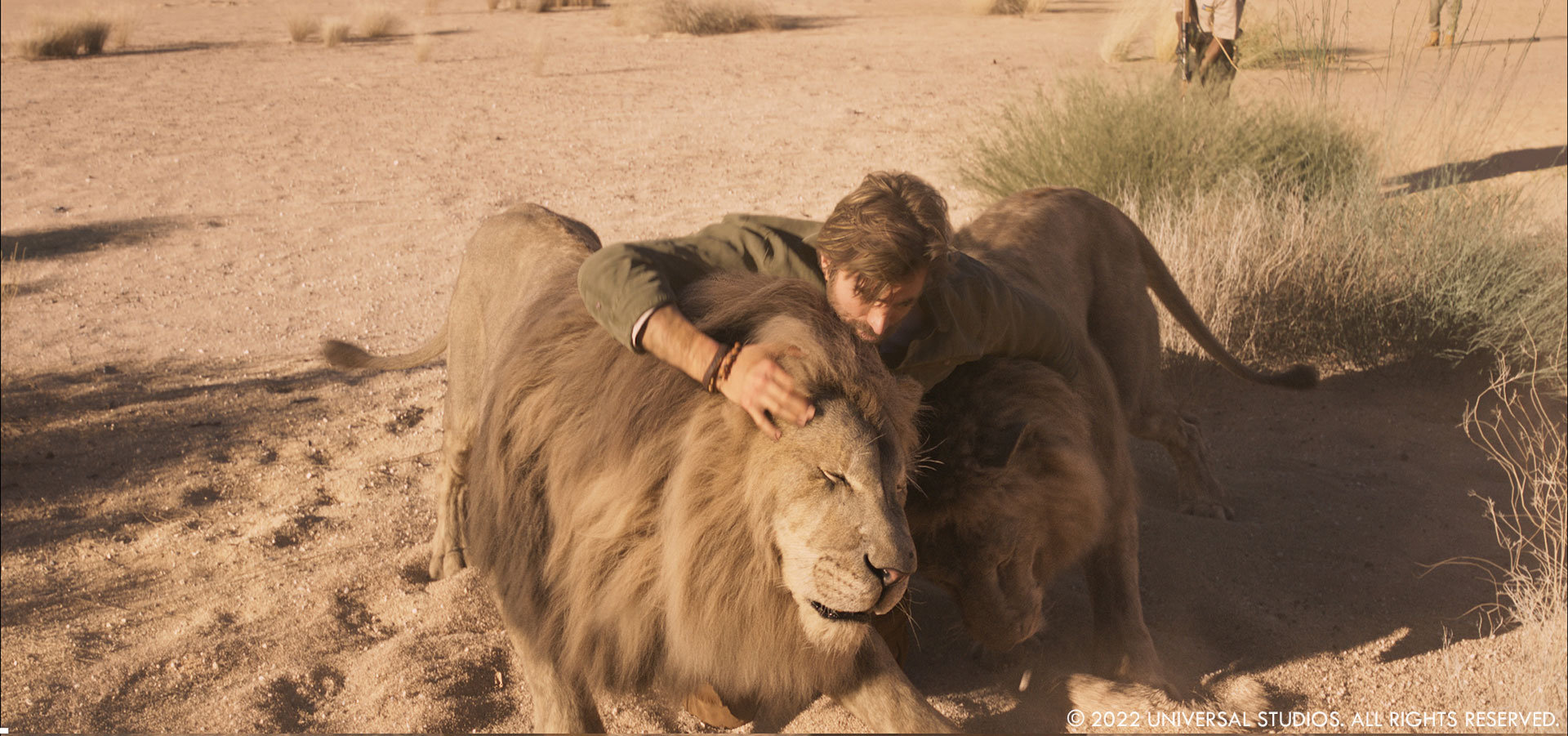
Can you tell us more about its impressive fur?
The fur and mane in particular, were meticulously designed and developed by our grooming, lookdev and CFX department. We managed to get the same lighting reference lion pelt and lion mane that we used throughout the shoot imported from South Africa for our lookdev team to study closely. This was a great starting point to get a deeper understanding of how lion fur reacts to light, as well as its properties in thickness, colour, translucency and general coarseness. The grooming department manually drew a huge number of guide hairs that would drive the overall volume and shape of the mane. The CFX department developed simulation systems that would allow the mane to react to wind and lion movement in a realistic way while still maintaining volume and allow for art direction from Balt. And the lookdev department worked hard to develop a system that allowed us to replicate the look of lion fur regardless of distance to camera which can sometimes be a huge headache.
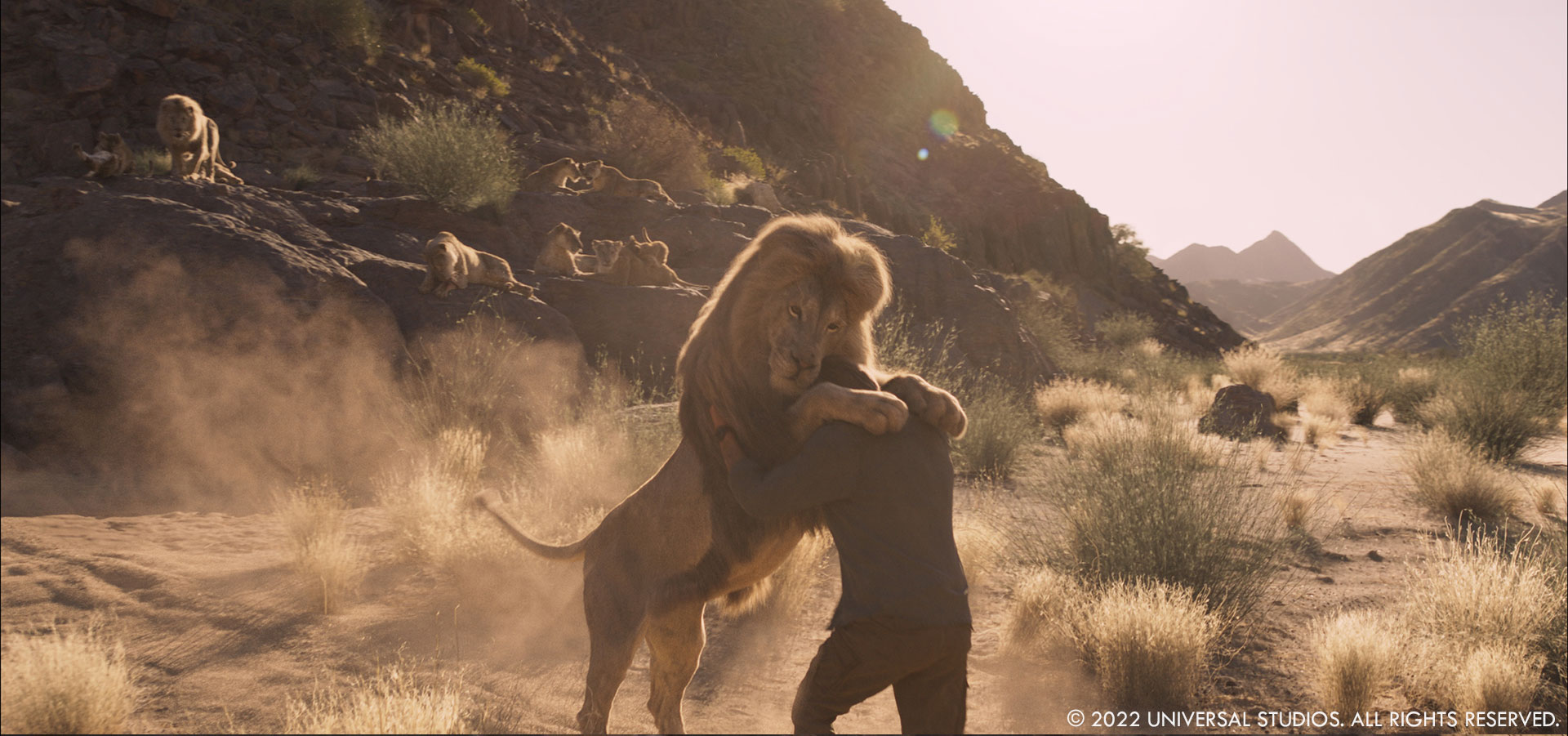
How did you create the car crash and the explosion?
The car crash started life out on location. We had the car rigged to fall down the cliff. Filmed throughout the night, we had a few various takes to try and get the crash to work. However it was slightly underwhelming from a cinematic car crash point of view, so in the end we ended up going fully digital from the moment we wipe the frame with the cast.
This is a fully digital environment, painstakingly recreated using the reference we captured on location. Everything from the cliff, to trees, foliage, rocks and sand. We tried to get this as close to the real world as possible.
There is a lot of FX throughout this shot, with an impressive amount of interaction betwee the environment, Beast and our fully digital vehicle that is destroyed and breaks apart as we follow it down. There’s every type of FX involved in this – rigid body dynamics as the car falls down, and animated trees, foliage, falling rocks, simulated dust and sand, volume atmospherics, smoke, fluids fr .
There is lots of interaction between the environment, Beast and our fully digital vehicle that is destroyed and breaks apart as we follow it down. There is a vast amount of FX, everything from rigid body dynamics and destruction, to sand, dust, smoke, dripping gasoline fluid, fire and explosion, all digital.
Which oner was the most complicated to create?
Alex Payman – our composting supervisor would likely argue that the most difficult oner was the scene where the poachers arrive. This was the longest shot in the film, at over 10,000 frames long, using around 12 different plates. We start inside the car in what happens to be a dream, followed by a second dream, followed by a touching conversation by Nate and his daughter. This leads onto the poachers being heard on the radio and the poachers arriving. We then exit the vehicle with Nate as he walks up to the poachers and keep up with the action all the way to Nate being hit in the head, the lion attacking the poachers, all hell breaking loose with guns firing and people shouting, before Nate arrives back at the vehicle. Even just describing it, it’s clearly an intense scene. The work was really difficult with a lot of rig removals, full CG car interior takeovers, cg car exterior, lots of projection work, lots of paint rebuilding plates, full CG environment take over, a lion, and tons of painful stitches.
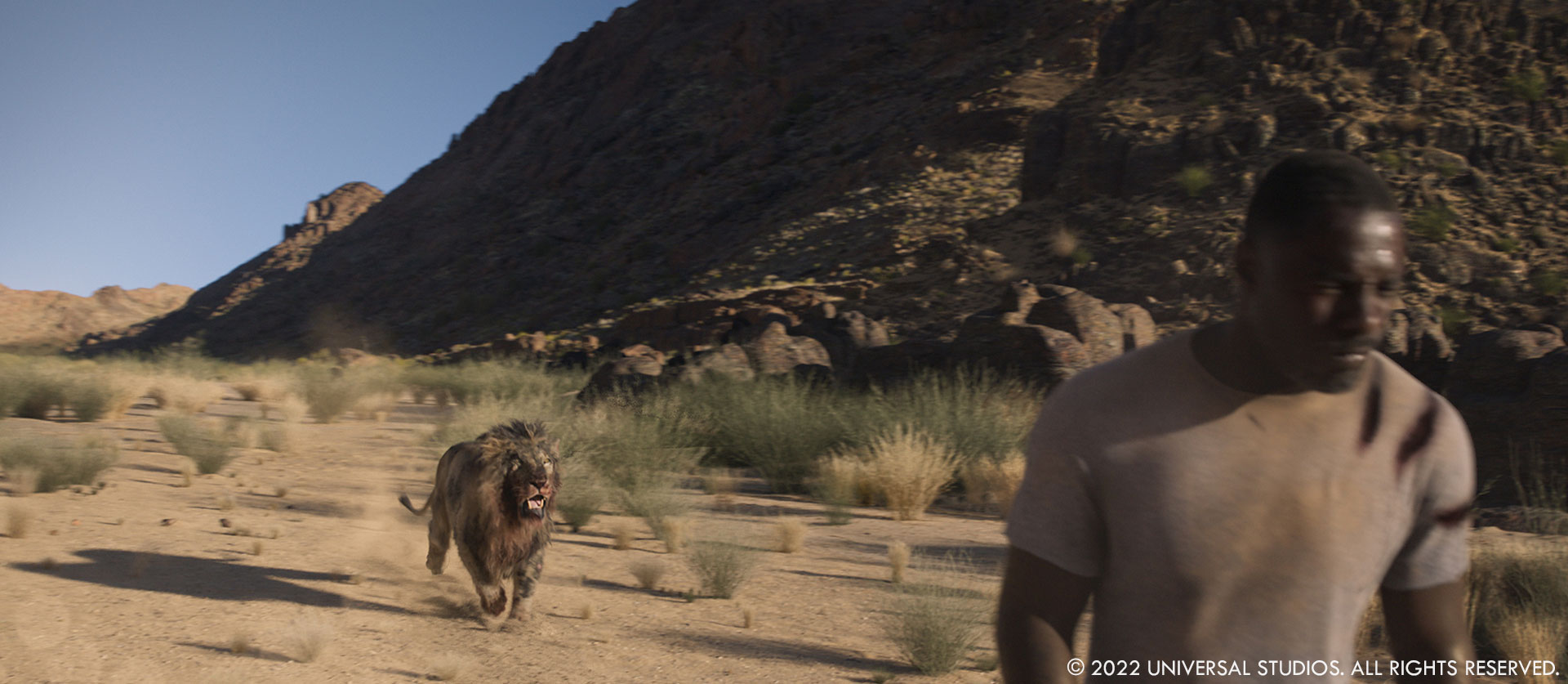
Did you want to reveal to us any other invisible effects?
All night scenes have some form of sky replacement as we couldn’t capture much of the sky on location. There is also a lot of CG car interior panel replacement where our set car had various parts missing to help the camera department.
Which sequence or shot was the most challenging?
We had quite a few sequences which carried a similar level of challenge although in very contrasting ways. The lion hug was challenging because it was a long take, and had to feel quite special being the first time we saw the lions. The scene ‘Under The Car’ came with its own challenges through stitching a number of plates together while confined to a small window in which to showcase Beast’s ferocious performance without it feeling repetitive. The ‘Night Attack’ – similarly had quite a few plates that needed stitching and a full CG takeover towards the end of the scene. The end fightly marginally wins it in that we had to have a performance from Beast that really integrated and complemented Idris’. It was effectively largely a full CG shot, with full environment rebuilding, digi double work with tons of interaction between the lion and the body, ripped costume, blood, sand interaction, dust, lots of creature FX and animation work and of course it’s largely a oner, which was very late on split into two shots.
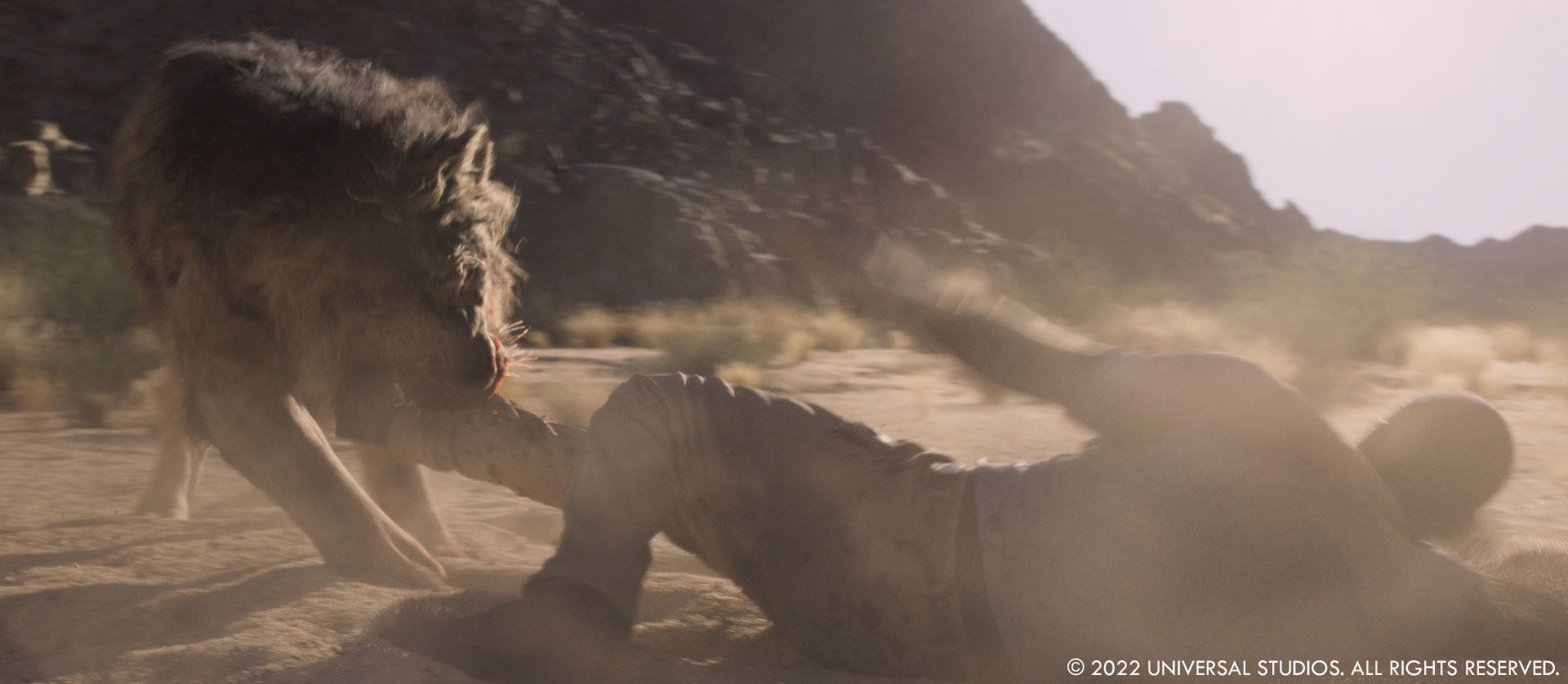
Is there something specific that gives you some really short nights?
Now that we’ve delivered the show, I sleep rather well knowing that we did a great job of bringing our lions to life, and have Beast play such a significant role as another cast member delivering a compelling performance as per Balt’s direction.
What is your favourite shot or sequence?
The lion hug would have to be my favourite shot. It’s a very long single take, where the family arrives in the bush. Sharlto puts on a show performance for the family where he walks up to the pride lying on the rock. Kuda & Yera – our digital lions aggressively run up to him and they have a tender embrace followed by some rough play. I love the animation of the lions and their photo natural nature appearance in the shot. The digital lion performance integrated with Shartlo’s in response to the puppeteered lions on location works incredibly well. The lighting is beautiful, and you really feel that you’re in Africa.
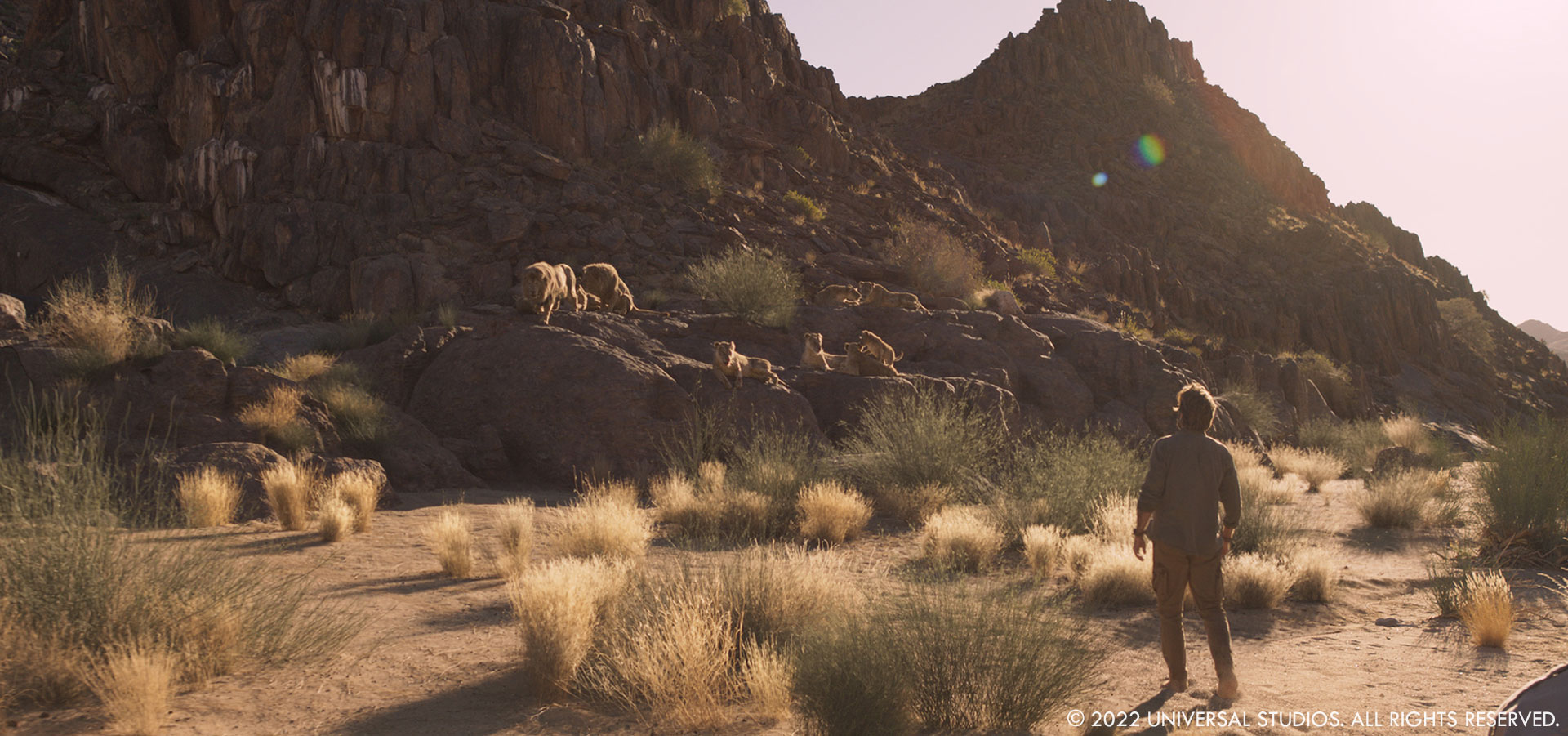
What is your best memory on this show?
Oh god, there are so many. During prep we did a lot of recce’s where we were flying up and down South Africa scouting locations and exploring where the shoot would take place. Lots of long hikes, climbing up and down cliffs, beautiful sunsets, wild animals. Definitely some stand out moments there.
And of course meeting real lions and filming them extensively for reference would definitely have to be up there. It’s not very often you find yourself on a safari holiday as part of your job!
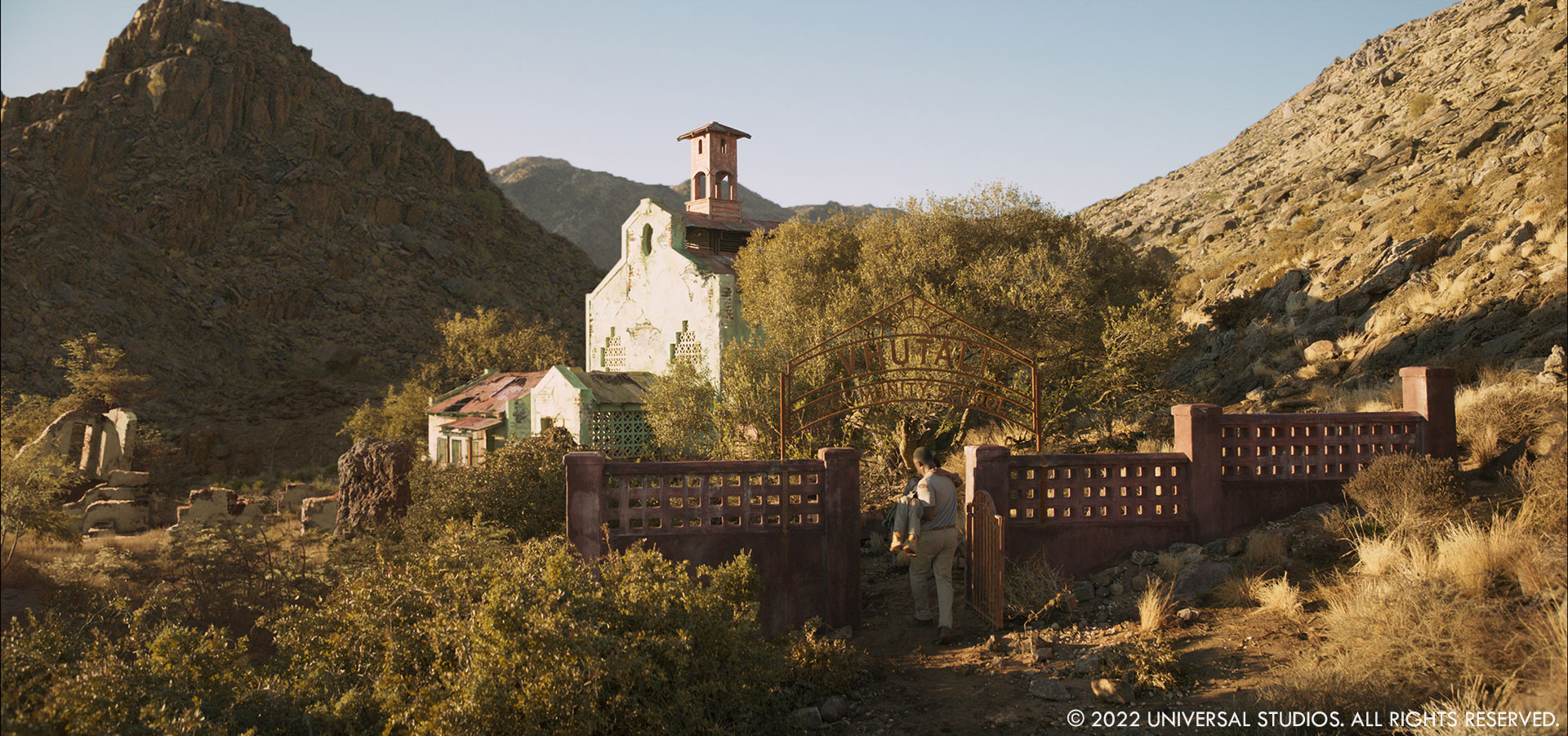
How long have you worked on this show?
I started on the show in February 2021 and delivered in July 2022.
What’s the VFX shots count?
Total shot count on the project was somewhere around the 200 mark. This however is very misleading as we had a substantial amount of long shots, shots ranging anywhere between 5000 to 10000 frames long. At a conventional 120 frame shot length, Framestore delivered 1000+ shots for Beast.
What is your next project?
Nothing confirmed that I can announce at the moment.
A big thanks for your time.
// Beast – Trailer
WANT TO KNOW MORE?
Framestore: Dedicated page about Beast on Framestore website.
© Vincent Frei – The Art of VFX – 2022

